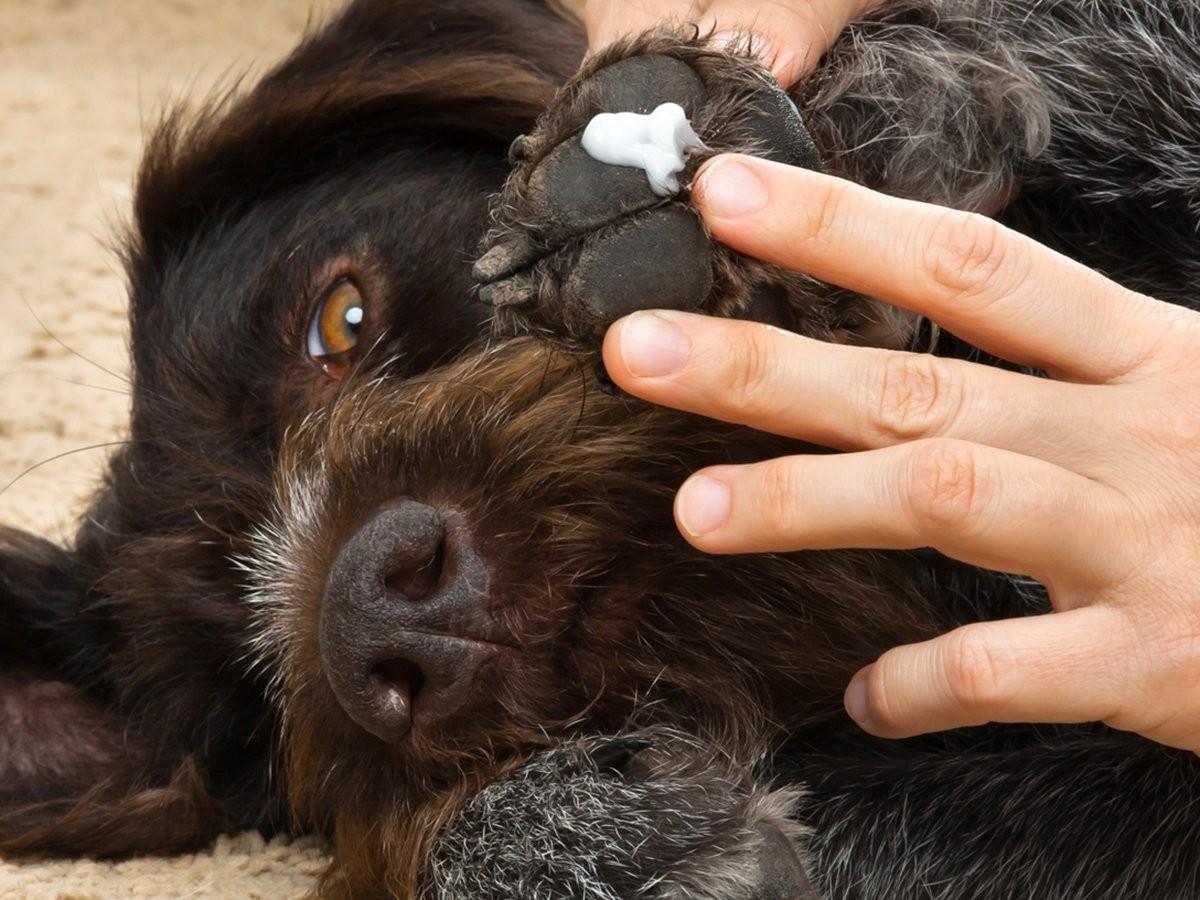Our furry friends are bound to get a few scrapes and bruises from time to time, just like their owners. Whether it be from exploring outside, roughhousing with their animal friends, or simply just being clumsy, your dog may come home with some minor injuries. When you notice they have a cut, you may wonder how best to treat it. Neosporin seems like it could be a good, safe option, but is it safe for dogs?
The answer is more complicated than you may think. In some cases, this product is a helpful tool for healing your dog’s minor wounds. However, depending on the severity and location of the injury, it may not be your best option. Keep reading to learn about the situations where you should and should not use Neosporin on your dog.
What is Neosporin?
First off, what exactly is this product? Neosporin is a brand name for a combination medicine, otherwise known as a triple antibiotic ointment, that is used to kill bacteria on your skin and therefore reduce the risk of infections following minor injuries to the skin. It is primarily used for cuts, scrapes, and burns and is an over-the-counter medication that can be found at most pharmacies and drugstores. Neosporin is a topical medication only and should not be ingested as it can cause harm to the kidneys. Additionally, it should not be used to cover large areas of the body or on serious injuries.
The advantage of using Neosporin is that it kills existing bacteria and hinders them from continuing to grow. When used topically, it acts as a physical barrier that prevents bacteria from getting inside the wound. This will protect the wound from becoming infected.
Is Neosporin safe for dogs?
While Neosporin may seem harmless, we must remember that it was made specifically for humans. As a general rule, it’s best to speak with your veterinarian before administering any kind of medication for your dog. With that being said, Neosporin is generally safe for dogs when applied in very small amounts.
Your dog may be allergic to Neosporin, so conduct a patch test before using. Symptoms of an allergic reaction can be redness, hives, itching, trouble breathing, or facial swelling. If your dog exhibits any of these symptoms, stop use immediately and call your vet. If your pup is okay after the patch test, then you can use Neosporin on other areas.
Dogs often lick wound sites, so applying Neosporin may lead to them ingesting the medication. This is why it is imperative that you only use small amounts. Neosporin is not safe for your dog to ingest and if too much is used it can cause stomach pains, vomiting, diarrhea, and a loss of appetite. When applying, avoid your dog’s eyes, ears, and mouth.
What should you do when your dog has a small scrape?
There are many options for cleaning your dog’s wounds if you notice they have a small scrape or cut.
First, gently wash the wound with warm water to clear it of any dirt or debris. Then, apply a pet-safe antiseptic to kill unwanted bacteria. Make sure this antiseptic does not get in your dog’s eyes or mouth. Once it dries you can apply a topical antibiotic such as Neosporin. Your dog will likely try to lick it off immediately, so try to prevent them from doing so for at least 10 minutes to make sure the antibiotic works and only use a small amount. If you don’t want to use Neosporin, you can opt for a pet-safe alternative such as SSD or bacitracin ointment. As with Neosporin, consult your vet before using anything. Finally, keep a close eye on your dog’s injury for the next few days to make sure it doesn’t get worse. Don’t allow your dog to lick or chew at the site as this can make the healing process take longer. If their licking is becoming an issue, let your vet know and they can advise you on ways to prevent them from reaching the site. You should also give your vet a call if the wound gets any worse.
These steps are only for very minor injuries that can be treated at home. If your dog has anything more than a small scrape, speak with your vet.
Final Thoughts
If your dog has a minor scrape or cut those needs tending to, it’s usually okay to use a small amount of Neosporin on the wound. Always consult your veterinarian before using Neosporin or any other medications and conduct a patch test to make sure your dog isn’t allergic. Remember that dogs will want to lick the medication off of them, so try to stop them from doing this for a few minutes after applying and only use small quantities of the medication.
If you’re wary of using a human product like Neosporin on your dog, talk to your vet about some more pet-friendly alternatives. There are other options available that may be better for you and your dog’s needs.
Lastly, if your dog has anything more than a very minor injury or if their minor injury isn’t getting better within a few days, call your vet! They are experienced professionals who can help you decide the best possible course of action to keep your beloved pet safe.
Keep your dog happy and healthy
Here at Spot Pet Insurance, we know that your dog’s health and well-being is of the utmost importance to you. We understand how much you cherish your furry friends and we want to be there to help you with anything you may need to keep them safe and happy.
For advice on all things pet-related, check out Spot Pet Insurance’s webpage! We provide you with tons of educational materials that will help you give your pet the best care possible. We also offer personalized pet insurance plans to help keep your dog protected, happy, and healthy at all times.
www.webmd.com
www.drugs.com
wildearth.com
www.thesprucepets.com
www.akc.org
